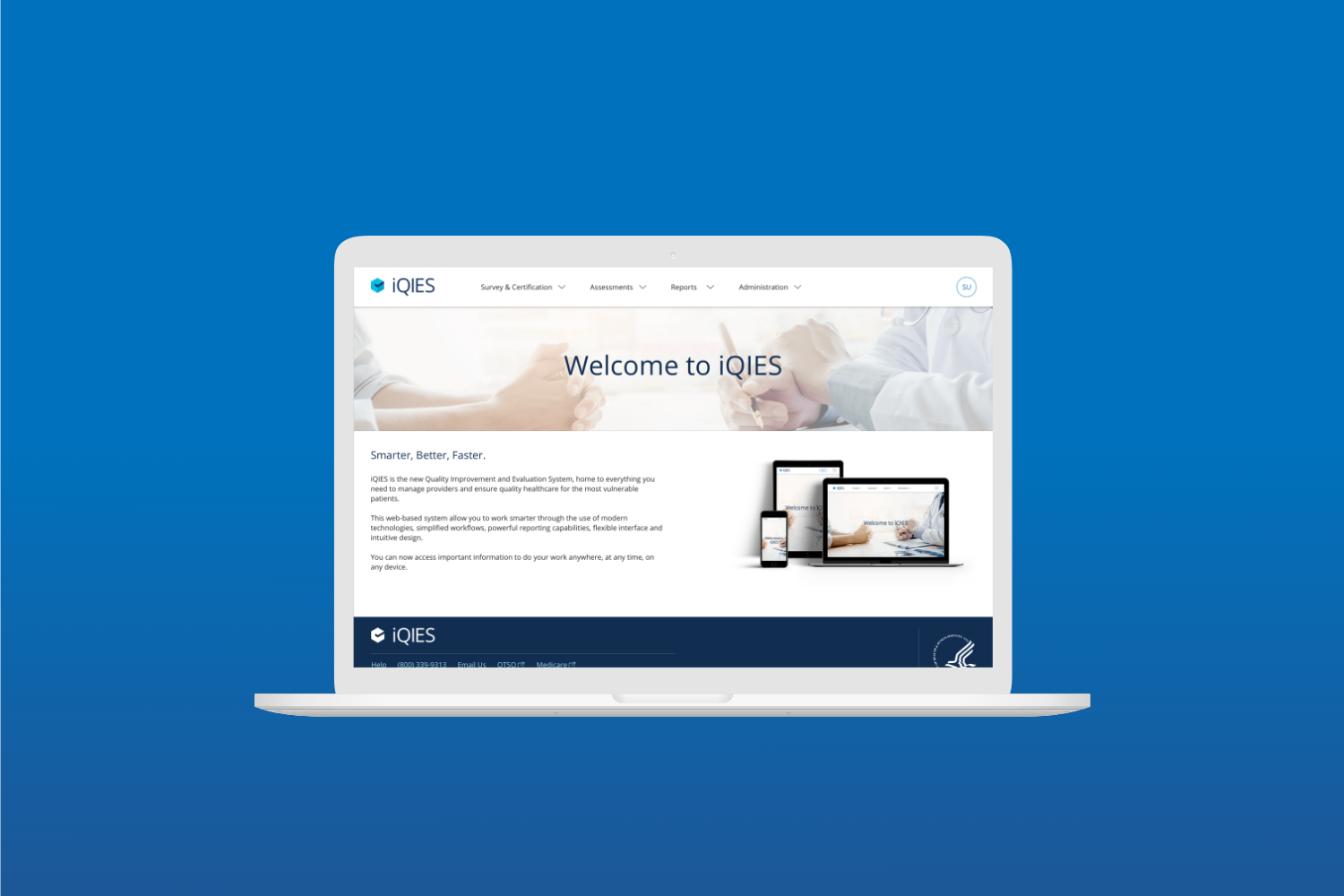
iQIES Survey Design Sprint
Internet Quality Improvement and Evaluation System (iQIES) is the new tracking, analysis, and data repository system for the Centers for Medicare and Medicaid Services (CMS), with core capabilities to include Survey & Certification, Patient Assessments, and Reports, all in one cloud-based Web application. Citation Management is the heart of the Survey & Certification capability, allowing surveyors to add citations, document their findings, and determine whether a provider is compliant with current federal or state regulations. From User Acceptance Testing (UAT), the bulk of the problems were identified in this Citation Management process and I had the opportunity to participate in a design sprint to ideate on solutions for this problem area.
Client: Centers for Medicare & Medicaid Services (CMS)
My Role: Lead UX Designer
Team: 1 Project Manager, 2 Researchers, 3 UX Designers, 1 Content Strategist
Overview
Objective
The purpose of the design sprint was to elevate the pain points users were having with the current Citation Management process in iQIES and create a product vision for managing citations and the post-survey activities that follow citations writing.
Methodology
We conducted a 4-day Design Sprint with a team of 7 people to define and understand the challenge, vote on an idea, create a prototype and user test our hypothesis.
Day 1: Mapping
Defined the challenge
Conducted expert interviews to understand the process
Created How Might We (HMW) statements
Mapped the current user journey
Defined short and long-term goals to sprint questions
The high-level sprint questions were:
Can we create a process where new/novice users can complete the tasks with minimal instructions or oversight?
Can we indicate to users what stage of citation management process they are in?
The short and long term goals we came up with were:
Short-term: In 6 months time, citation management will be a streamlined process with minimal steps, a clear indication of status, and give visibility across users.
Long-term: In 2 years time, surveyors will use the streamlined citation management tool to document their findings on site.
Day 2: Deciding
Solution sketching
Walk through of art gallery & dot voting
Storyboarding
Solution Sketching
Based on the goals defined, we spent some time solution sketching what the enhanced citation management process could look like.
Art Gallery Walk Through & Dot Voting Exercise
After solution sketching, we all participated in a walk through of the sketches and voted on our favorite items.
Storyboarding
The rest of the afternoon was spent on storyboarding the flow of the prototype we wanted to build based on the exercise we did in the morning. Dana and I used the whiteboard in the conference room to draw out the storyboard so everyone could be on the same page.
Day 3: Making
Day 3 was spent on making a working prototype to test with the users to get feedback. We used Sketch to create the mock ups and Invision to string the prototype together. The team was divided into two groups. I created the mockups and helped making the interactive prototype and the other group was responsible for putting the research plan together.
Invision Prototype of Citation Management
Citation Search
Citation List
Citation Details - View
Citation Details - Edit
Day 4: Feedback
On Day 4 of the Survey Design Sprint, we tested the new citation management designs with 5 users. Overall, the process of adding citations to a survey, writing the citation and reviewing the citations made sense to users.
Two participants who were familiar with the current design agreed that this design was easier to use.
Participants were able to add and remove citations. They understood how many citations had been added to the survey, and what to do next.
Participants really liked the single page format for writing a citation. Not having to open, save and close individual components made this process easier, as compared to the current design.
We learned a lot about the citation management process to help shape the next phase of this work.
Next Steps
We created JIRA tickets for the 7 Citation Management features and for aspirational features we added to the backlog. I later picked up most of the Citation Management features to iterate and test in the following several sprints.
What Users Are Saying
“This gives me a quick visualization as to where I am in the writing process.”
— NTLC Surveyor
“I can compile this folder with all the supporting documentation, so I think that this attachment area would really help the field supervisors to understand and sort through the information.”
— Nurse Practitioner
“Saving the draft means I’m still working on the evidence.”
— LSC Surveyor, Registered Nurse
Lessons Learned
Some lessons we learned about the 4-day design sprint was:
To keep the stakeholders informed and in the loop throughout the 4 days of the design sprint
To reserve enough time for a dry run on "Day 3" to test the prototype before putting in front of users to tweak and fine tune
After 4 days of the intense workshop, it's easy to just pack up after the last user test, but reserve enough time to capture the team member's view points and areas that need enhancements when it's fresh on their minds
The “Survey Design Sprint” to ideate on a new improved process was deemed valuable. After we implemented the new citation management process and did another round of User Acceptance Testing (UAT), we found that the satisfaction of users who used the process before and after had improved significantly. A big win for our team!







